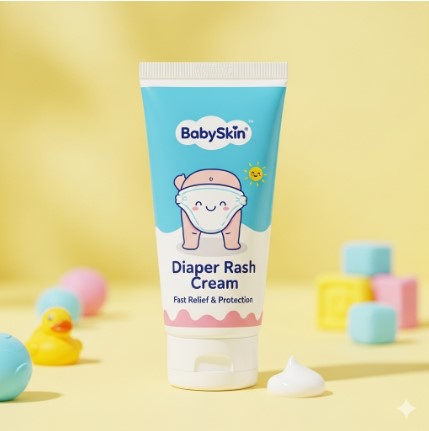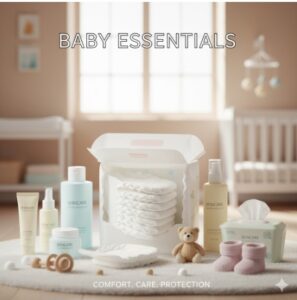Diaper Rash Cream has become an essential element of infant and adult care, offering immediate comfort and robust skin protection against one of the most common irritant conditions: diaper rash (or diaper dermatitis). Choosing, applying, and using these creams appropriately is crucial for best results—whether the goal is prevention, rapid treatment, or management of recurrent or severe rash. Drawing on clinical insights and expert guidelines, this resource explores how to select and use Diaper Rash Cream for optimal skin health.
Understanding Diaper Rash and Its Triggers
Diaper rash arises where skin is warm, damp, and exposed to friction, enzymes, urine, and feces. Left unchecked, these stressors break down the natural skin barrier, resulting in redness, soreness, swelling, and—sometimes—infection. Babies most often experience this, but adults requiring incontinent care are similarly at risk.
Core Principles of Diaper Rash Management
1. Keep Skin Clean and Dry
Changing soiled diapers quickly is the first defense. Regular changes (every 2–3 hours for infants, or immediately after soiling for any age) prevent moisture buildup. Gently cleanse the area with warm water or ultra-mild, fragrance-free wipes. Pat—not rub—the skin dry, as friction can worsen irritation.
2. Use Barrier Protection At Every Change
Diaper Rash Cream’s primary job is to block contact with irritants and moisture. Apply a thick, even layer (like “icing on a cake”) during each change, particularly overnight or when longer intervals between changes are expected. Most common are cream, ointment, or paste forms; ointments and pastes tend to form the most significant protective layer.
3. Optimize Airflow
Allow skin to “air out” as much as possible—during a diaper change, let the area breathe before applying the new diaper. Looser-fitting diapers further minimize chafing and permit greater airflow.
What Ingredients Make an Effective Diaper Rash Cream?
Zinc Oxide
Widely recognized as the gold-standard active, zinc oxide offers:
-
Longstanding clinical use and pediatrician trust
-
Potent skin barrier, reflecting moisture and irritants away from damaged areas
-
Mild anti-inflammatory and astringent effects
-
Safety for frequent and extended use
Formulas typically feature 10-40% zinc oxide, with higher concentrations reserved for severe or persistent rashes.
Petrolatum and Lanolin
Petrolatum (petroleum jelly) seals moisture in and irritants out, aids healing, and works well in daily preventive care. Lanolin also creates a hydrophobic barrier, with added benefits for healing and rehydrating dry, flaky skin.
Botanical Extracts and Modern Actives
Chamomile, aloe vera, oat kernel, and calendula extracts have credible soothing and anti-irritant effects. High-end products may add dexpanthenol, taurine, or squalane for enhanced barrier support and reduced inflammation, often catering to sensitive or allergy-prone users.
Avoiding Harsh Additives
For those with known sensitivities:
-
Seek fragrance-free and dye-free options.
-
Avoid parabens or unnecessary preservatives if allergic reactions are a concern.
-
Use very simple formulas in high-risk infants, adults, or anyone with a history of dermatitis.
Daily Routine, Prevention, and Treatment
Prevention
Caregivers, nurses, and pediatricians strongly support the use of Diaper Rash Cream at each change, even before symptoms arise. Barrier application after cleaning and drying the skin protects fragile areas from maceration and chemical breakdown. Daily use is especially important with new foods, medication (antibiotics), teething, or illness, all of which may increase rash risk.
First Signs of Rash
The moment redness or irritation is detected, escalate protective care:
-
Apply a thicker layer of Diaper Rash Cream after every cleaning.
-
Leave as much time as possible with the area open to air.
-
Avoid any scrubbing or harsh friction.
-
For severe rashes, use creams with a higher zinc oxide percentage and consult a doctor if there is no improvement in 3–5 days.
Advanced Clinical Tips and Special Situations
Persistent or Severe Rash
If standard cream does not resolve symptoms within a week, seek medical advice. Specialized options might include:
-
Hydrocortisone 0.5–1%: For severe inflammation, doctor-prescribed steroid cream (for short, limited use only).
-
Antifungal cream: For secondary infections caused by yeast (often recognizable as persistent or spreading rash despite care).
-
Antibiotic cream: For impetiginized (bacterial) diaper dermatitis, as determined by a healthcare provider.
-
A dermatologist may be necessary for unresponsive or recurrent cases.
Adults and Special Populations
Adults with incontinence or mobility limitations require the same diligence: frequent cleansing, immediate barrier reapplication, and preference for fragrance-free, highly emollient creams. Extra air-drying and treatment of any coexisting yeast or bacterial infections may be required.
Cloth Diaper Considerations
Not all Diaper Rash Cream is suitable for reusable (cloth) diapers. Petroleum-based products can reduce diaper absorbency and leave residues. Special cloth-diaper-safe creams are available, mostly zinc-based, that are easily washed from fabrics without compromising function.
Types of Diaper Rash Cream and When to Use Each
-
Daily barrier cream or ointment: Petrolatum, low-level zinc for ongoing prevention and minor rash.
-
Intensive paste: High zinc oxide for acute or stubborn rash; forms a thick barrier ideal for overnight use.
-
Soothing cream: Combination of botanicals, dexpanthenol, and mild emollients for skin that is drying out or peeling.
-
Antifungal or medicated: Short-term use only under medical advice for rashes with diagnosed infection.
Important Application and Removal Tips
-
Never forcefully rub off residual cream; leave a light layer in place when possible, removing only what is soiled at each change.
-
Use only soft cloth or warm water for cleaning; avoid vigorous wiping.
-
If the rash recurs often, check for possible allergies to wipes, diapers, or even the cream’s base ingredients.
Common Myths
-
“More expensive creams are always better.” Price does not guarantee clinical effectiveness—safe, affordable products containing petrolatum and/or zinc oxide usually provide equal results.
-
“Creams cure infection.” Barrier products help heal but do not treat infection; persistent rashes may need antifungal or prescription antibiotics.
-
“All creams are safe for all users.” Always read labels; ingredients may cause sensitivities, especially in very young, premature, or immunocompromised individuals.
Conclusion
Diaper Rash Cream is a time-tested, clinically endorsed staple for both preventive and active infant (and adult) skin care. Choosing an appropriate barrier formulation, applying it correctly, prioritizing clean and dry skin, and knowing when to escalate care are fundamental steps. By following the best practices outlined here—grounded in both science and real-world expertise—caregivers can safeguard delicate skin, minimize discomfort, and maintain both health and happiness for those most at risk.
- Diaper Rash Cream: Best Practices for Prevention, Healing, and Daily Use
- Diaper Rash Cream has become an essential element of infant and adult care, offering immediate comfort and robust skin protection against one of the most common irritant conditions
- Diaper Rash Cream
Related posts:
No related posts.






